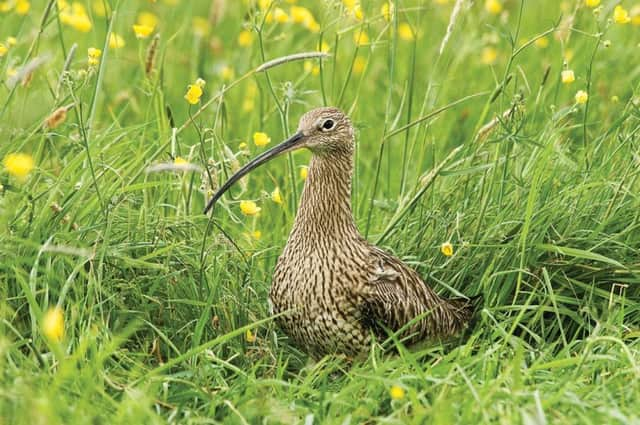Life on the Farm column with Frances Graham


The weather always seems to come worse during lambing time!
It is a lovely time of year on the farm with some of our fields literally covered with birds, including lapwings and curlew.
We love to see them come back to the farm each spring with their loud calls and swooping displays.
Advertisement
Hide AdAdvertisement
Hide AdMany of these birds are in severe decline across the country – lapwing numbers have fallen by a third in the past 20 years, and curlew by 50%.
Our farms are very important for ground breeding waders like these and we must protect them and try to make the habitat suitable for both the birds, and for the sheep and cows that we have.
We have recently attended training meetings about these birds on our farms.
The meetings are to make farmers more aware of the threats these birds face and to demonstrate different things we can do to help protect them. We are a member of the Upper Nidderdale Facilitated group.
Advertisement
Hide AdAdvertisement
Hide AdThis is a group of farmers, from Bewerley up to Scar House Reservoir, who have agreed to work together to look after wildlife across the whole landscape. Birds don’t know where one farm ends and the next begins so it is important that habitat is provided for them across all our farms.
The group has 20 members at the moment, so it shows that we are not just interested in sheep and cows, we are interested in the environment just as much.
We are lucky to have curlew nesting on our farm – these are on the red list and are in real danger as their populations have fallen to such an extent, that now the Pennines and the Yorkshire Dales remains one of their only strongholds.
They are extinct from many areas across the country. On our farm, we also have lapwings, grey partridge, golden plover, woodcock and snipe. Lapwings we see a lot of, but the birds that we see less of are grey partridge – these are also on the red list and are becoming very rare around here compared with just a few years ago.
Advertisement
Hide AdAdvertisement
Hide AdAll these birds prefer the marginal land, between the grassland and the heather moorland. These birds don’t nest on the heather, they nest in rushes and down dyke sides, they need ground where it has been grazed and it has to have a variety of cover.
We are always careful of the birds and their nests when we are moving and feeding the sheep and we only put quiet cattle in the fields where they are nesting.
Last week’s meeting was all about grey partridge. These are a bird that we need to make an effort to keep in the dale.
The grey partridge live on the edge of the moorland, on the longer and rougher grazing, as this normally has rushes which provide good shelter and nesting places.
Advertisement
Hide AdAdvertisement
Hide AdThey can also nest in our meadows where the tall grass provides good cover for them. We are careful in how we mow our meadows and always try to cut from the inside out and cut them late after any chicks have fledged.
A problem they face is from pheasants released for shooting. These are having an impact on the native grey partridge, as the larger pheasants push them out. The grey partridge is also under threat from other game birds such as the French partridge.
Hopefully this spring the weather will be kind to the birds nesting on our farm so that most chicks can make it, and return here themselves to nest in years to come.